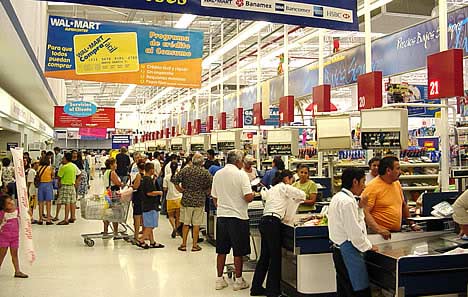 American consumer spending increased by just 0.1 percent in July as a large number of households saw their disposable income decline. Fears of budget cuts are forecast to occur this year, causing many salaried workers to fear major salary reductions.
American consumer spending increased by just 0.1 percent in July as a large number of households saw their disposable income decline. Fears of budget cuts are forecast to occur this year, causing many salaried workers to fear major salary reductions.
Major US retailers such as Macy’s and Wal-Mart have reported below-average total earnings as consumers spend less than usual. Poor job growth, government budget cuts, and rising interest rates are named as the main reasons for the low spending.
Consumer spending accounts for over 70 percent of the US economy, as production for goods purchased in the United States is primarily based in East Asian countries, Latin America, and Europe.
As such, a decline in consumer spending can have major negative effects for the US economy. Big-ticket products saw the largest decline in sales, with televisions, cars, and kitchen equipment struggling to depart store shelves.
Key concerns for consumers include the proposed reduction in the Federal Reserve policy of quantitative easing. Large-scale bond purchases have been responsible for the low interest rates that have encouraged spending amongst US consumers.
The proposal to decrease Federal Reserve spending resulted in major stock market uncertainty, as many consumer-focused companies struggle to plan for a reduction in spending.
Spending by US consumers hit a four-year record in July, after several years of low consumer spending prompted by the financial crisis. Concerns over interest rates, employment, and oil prices have been blamed for the decline in purchases.
Consumers are increasingly concerned that prices for oil and gas could increase if the United States engages in military action against Syria. An increase in oil prices could have negative effects on consumer spending and manufacturing activity.
Despite the decline in consumer spending, the US second-quarter GDP was fairly positive. Growth was revised to 2.5 percent from prior estimates of 1.7 percent, after a record month in July.





